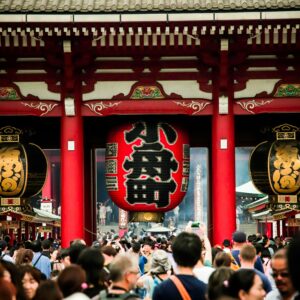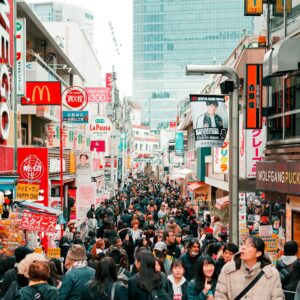How Much Cash to Bring to Japan: Guide for Travelers
Planning a trip to Japan is exciting, but figuring out how much cash to bring can be a bit tricky. Even though Japan is known for its cutting-edge technology, it’s still a place where cash is really important for a lot of things.
In this guide, we’ll dive into Japan’s cash culture, what kind of daily expenses to expect, when to use cash versus cards, how much cash you should bring, and more. By the end, you’ll have all the info you need to handle your money smoothly and enjoy your trip to the fullest.
Japan’s Cash Culture Explained
Historical Background
Japan has a long-standing tradition of valuing cash transactions. While the rest of the world moves towards cashless payments, Japan maintains its unique approach. This is rooted in cultural practices and historical preferences for tangible transactions. Even though modern advancements have introduced more cashless options, cash remains essential, especially outside major urban centers.
Importance of Cash for Tourists
For tourists, having cash can significantly enhance your experience. Many small businesses, family-run restaurants, and local attractions do not accept credit or debit cards. This means that cash is necessary for fully immersing yourself in the authentic Japanese experience without facing payment obstacles.
Typical Daily Expenses in Japan

Hotel & Accommodation
Budget: Hostels and Capsule Hotels
For budget-conscious travelers, Japan offers a range of affordable accommodation options. Hostels and capsule hotels are popular choices, especially in major cities. On average, a night in a hostel can cost between ¥2,500 and ¥5,000, while capsule hotels range from ¥3,000 to ¥6,000 per night.
Mid-Range: Business Hotels and Traditional Inns
Mid-range travelers can opt for business hotels or traditional inns (ryokan). Business hotels provide convenience and comfort at reasonable prices, typically costing between ¥6,000 and ¥12,000 per night. Staying in a ryokan offers a unique cultural experience, with prices ranging from ¥8,000 to ¥20,000 per night, often including traditional Japanese meals.
Luxury: High-End Hotels and Ryokan
For those seeking luxury, Japan boasts an array of high-end hotels and ryokan. These accommodations offer top-notch amenities and exceptional service. Prices for luxury hotels start at around ¥50,000 per night, while upscale ryokan can exceed ¥100,000 per night, providing a lavish and memorable stay.
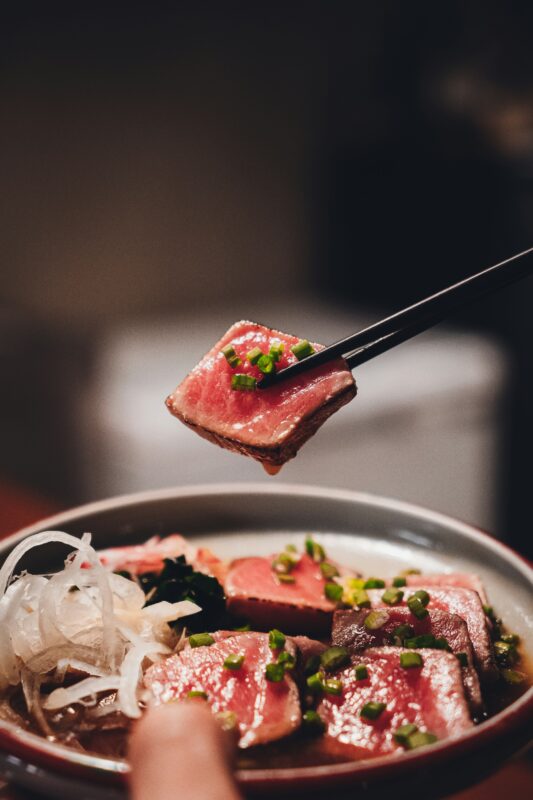
Food & Dining
Convenience Stores and Street Food
One of the joys of visiting Japan is experiencing its diverse culinary offerings. Convenience stores like 7-Eleven, Lawson, and FamilyMart are ubiquitous and offer a wide variety of affordable meals and snacks. A typical meal from a convenience store can cost between ¥300 and ¥800.
Street food is another budget-friendly option. Popular items like takoyaki (octopus balls), yakitori (grilled chicken skewers), and taiyaki (fish-shaped pastries) are readily available at local markets and festivals, with prices ranging from ¥100 to ¥500 per item.
Mid-Range Restaurants
Mid-range dining options include a variety of restaurants serving sushi, ramen, tempura, and other Japanese specialties. A meal at a mid-range restaurant usually costs between ¥1,000 and ¥3,000 per person. Look for set menus (teishoku) for good value.
High-End Dining
For an upscale dining experience, Japan has numerous Michelin-starred restaurants and exclusive eateries. These high-end establishments offer exquisite dishes, often prepared with premium ingredients. Prices for such meals can start at ¥10,000 per person and can go much higher depending on the restaurant and menu.
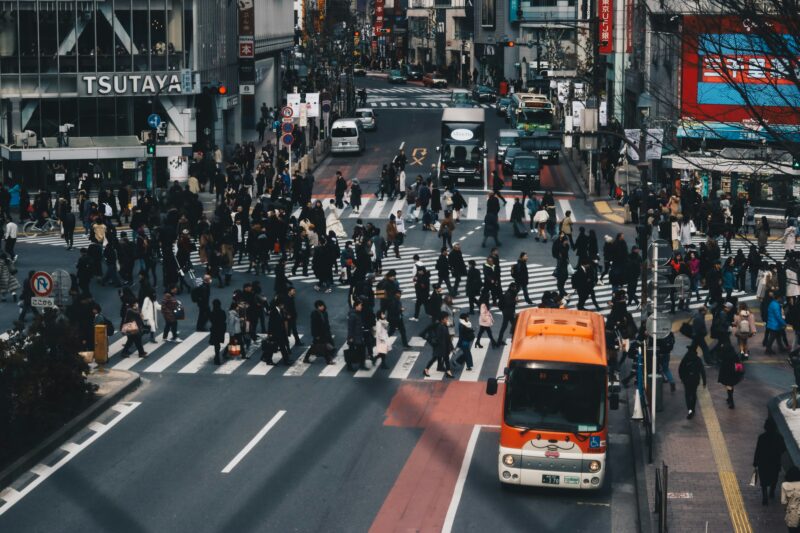
Transportation
Local Transport: Subways, Buses, Taxis
Japan’s efficient public transportation system makes it easy to get around cities. Subway fares in major cities like Tokyo and Osaka start at around ¥200 per ride. Day passes are available for unlimited travel, costing approximately ¥1600 for adults. Visit Tokyo Metro’s site for pass options.
Buses are another affordable option, with fares starting at ¥100. Taxis, while convenient, are more expensive.
Base fares start at ¥500–¥800, with additional charges per kilometer. Taxis are best used for short distances or when public transport is not an option.
Long-Distance Travel: Shinkansen and Regional Trains
For long-distance travel, the Shinkansen (bullet train) is the fastest and most convenient option. One-way tickets between cities like Tokyo and Kyoto range from ¥11,000 to ¥14,000, but JR Passes offer great value if you’re planning multiple train trips. Learn more about JR Passes at Japan Rail Pass.
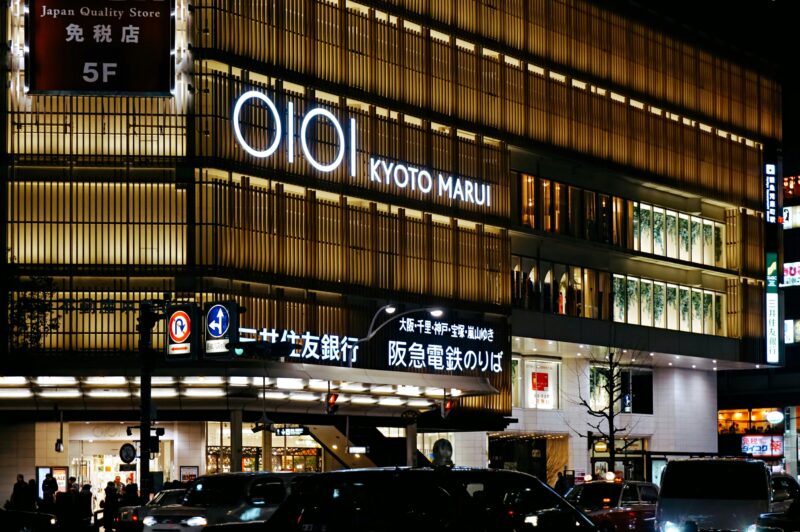
Sightseeing & Entertainment
Entry Fees for Attractions
Japan is home to numerous attractions, from ancient temples and shrines to modern museums and theme parks. Entry fees vary widely. Popular sites like Tokyo Tower, Osaka Castle, and Kyoto’s Kinkaku-ji Temple charge between ¥500 and ¥1,500.
Learn about Japan’s art, history, and culture at top museums like Tokyo’s National Museum or Hiroshima’s Peace Memorial Museum. Tickets usually cost ¥800–¥2,000. Check museum details on Go Tokyo.
Shopping and Souvenirs
Shopping is a major part of the Japanese travel experience. From traditional crafts to modern gadgets, there’s something for everyone. Budget for souvenirs and gifts, with prices varying based on the item and location. Street markets and local shops offer unique items at reasonable prices, while department stores and specialty shops can be more expensive.
Cash vs. Card Usage in Japan
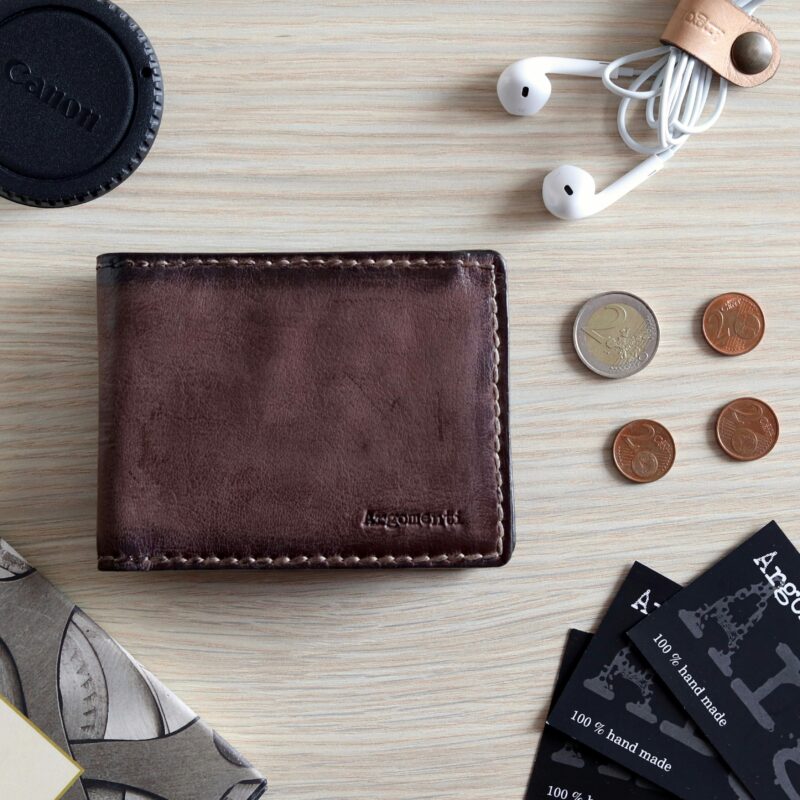
While major cities and tourist areas increasingly accept credit and debit cards, cash remains indispensable in many parts of Japan. Understanding when and where to use cash versus cards can save you from inconvenience.
Where Cash is Essential:
- Small Restaurants and Cafes: Many family-run establishments only accept cash.
- Traditional Markets and Rural Areas: Local vendors and shops often do not have card facilities.
- Local Transportation and Vending Machines: Some transportation systems and most vending machines require cash.
Where Cards are Accepted
- Major Hotels and Department Stores: Credit and debit cards are widely accepted.
- Chain Restaurants and Convenience Stores: Most chains accept cards, but it’s always good to confirm beforehand.
How Much Cash Should You Bring?
Budget Travelers
Budget travelers can manage with ¥8,000 to ¥15,000 per day. This covers basic accommodation, food, transportation, and entry to a few attractions. Keeping a credit card for emergencies is advisable.
Mid-Range Travelers
For mid-range travelers, ¥20,000 to ¥30,000 per day is recommended. This allows for comfortable accommodation, dining at mid-range restaurants, and exploring multiple attractions.
Luxury Travelers
Luxury travelers should consider bringing ¥50,000 or more per day. This budget accommodates high-end dining, premium accommodation, and luxury experiences.
Currency Exchange Tips
Where to Exchange Currency
Airports vs. Local Exchange Centers
When you arrive in Japan, you’ll find currency exchange counters at airports, which are incredibly convenient for getting some yen right away. However, be aware that the exchange rates at airports are often less favorable compared to other options. It’s a good idea to exchange a small amount at the airport to cover immediate expenses like transportation to your accommodation and meals for the first day.
Once you’re settled, look for local exchange centers in the city. These centers usually offer better rates and lower fees. You can find them in popular tourist areas, major train stations, and shopping districts. Always compare rates at a few different places to ensure you get the best deal.
Banks
Banks are a reliable option for currency exchange, offering competitive rates and security. You can visit major banks in Japan, such as Mitsubishi UFJ, Sumitomo Mitsui, or Mizuho Bank. Keep in mind that bank hours are typically from 9 AM to 3 PM on weekdays, and they are closed on weekends and public holidays.
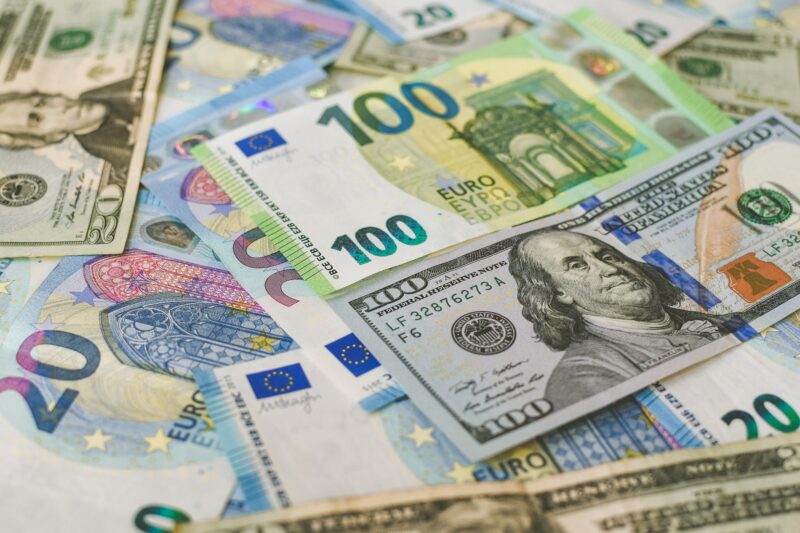
Getting the Best Exchange Rates
Monitoring Exchange Rates
To get the best exchange rates, it’s essential to monitor the rates before your trip. Currency exchange rates fluctuate daily due to market conditions. Use online tools and apps to track these changes and plan your exchange when rates are favorable. Websites like XE or OANDA to monitor exchange rates.
provide real-time exchange rate information and can help you decide the best time to exchange your money.
Exchanging in Your Home Country vs. Japan
Exchanging currency in your home country might offer better rates and the convenience of having yen ready upon arrival. However, if the rates aren’t favorable, consider waiting until you reach Japan, where local exchange centers often provide competitive rates. Avoid exchanging currency at hotels and tourist hotspots in Japan, as they tend to have higher fees and less favorable rates.
Using ATMs in Japan
Where to Find International-Friendly ATMs
When you need to withdraw cash in Japan, it’s important to know where to find ATMs that accept international cards. Here are some reliable options:
- 7-Eleven Stores: One of the most convenient places to find an international-friendly ATM is at 7-Eleven stores, which are abundant across Japan. These ATMs are available 24/7 and support a wide range of international cards.
- Japan Post Offices: ATMs at Japan Post Offices (look for the red “T” symbol) also support international cards. While the availability of English instructions varies, they are generally reliable for withdrawals.
- FamilyMart and Lawson Convenience Stores: These convenience stores also offer ATMs that accept international cards, though they might not be as universally compatible as those in 7-Eleven stores.
- Major Banks: Some major banks, such as Mitsubishi UFJ, Sumitomo Mitsui, and Mizuho Bank, have ATMs that accept international cards. These ATMs are typically located in bank branches, which can be found in cities and large towns.
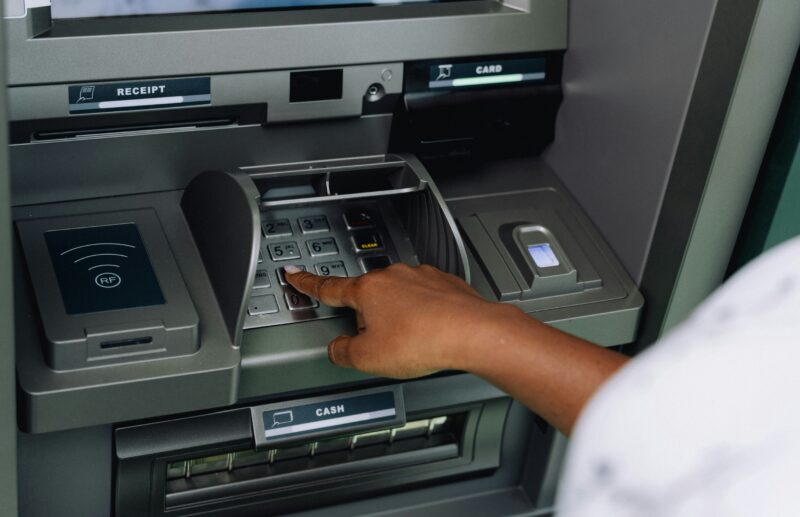
ATM Fees in Japan
Using ATMs in Japan as a foreign traveler can incur various fees. Here’s what you need to know:
- International Processing Fees: Your home bank may charge a fee for international withdrawals, which can range from a few dollars to a percentage of the withdrawal amount.
- Local ATM Fees: In addition to fees charged by your bank, the ATM operator in Japan might also impose a fee. This fee can vary depending on the ATM and the amount withdrawn.
- Currency Conversion Fees: When withdrawing yen, you may also be subject to currency conversion fees. These fees are typically a percentage of the transaction amount.
- Withdrawal Limits: ATMs in Japan usually have a daily withdrawal limit, which can vary but often ranges between ¥50,000 and ¥100,000 per transaction. Check with your home bank and the ATM provider for specific limits.
Tips for Using ATMs in Japan
- Plan Your Withdrawals: To minimize fees, plan your withdrawals carefully. Withdraw larger amounts less frequently rather than small amounts multiple times.
- Check ATM Availability: While 7-Eleven ATMs are available 24/7, others, like those at banks and post offices, may have limited hours. Plan accordingly, especially if you’re traveling in rural areas.
- Keep Emergency Cash: Always keep some cash on hand in case you encounter difficulties with ATMs or if you’re in an area where ATMs are not easily accessible.
- Notify Your Bank: Inform your home bank of your travel plans to prevent your card from being flagged for suspicious activity.
Cashless Payment Options
Overview of IC Cards Like Suica and Pasmo
What Are IC Cards?
IC cards, such as Suica and Pasmo, are rechargeable smart cards widely used for public transportation and small purchases. These cards are highly convenient, allowing you to tap and go on trains, buses, and even some taxis. You can also use them to pay at vending machines, convenience stores, and various shops.
How to Get an IC Card
You can purchase IC cards at train stations, particularly in major cities like Tokyo and Osaka. The initial cost includes a refundable deposit (usually ¥500) and a prepaid balance. You can top up your card at ticket machines, convenience stores, and online via certain apps.
Benefits of Using IC Cards
- Convenience: Eliminates the need for cash for many small transactions.
- Speed: Speeds up boarding on public transportation.
- Wide Acceptance: Accepted at many retail locations, vending machines, and some restaurants.
Mobile Payment Options
Popular Mobile Payment Apps
Japan has seen a rise in mobile payment options, with popular apps including:
- Apple Pay: Widely accepted in major retail chains, restaurants, and online stores. It integrates with Suica for public transportation.
- Google Pay: Similar to Apple Pay, it’s accepted at many locations and can be linked to Suica.
- LINE Pay: A popular local option, linked to the LINE messaging app. It’s widely accepted in stores, restaurants, and for online purchases.
- PayPay: Another popular mobile payment service in Japan, accepted at a growing number of locations.
Setting Up Mobile Payments
To use mobile payment apps, you need a compatible smartphone. Here’s how to set them up:
- Download the App: Install the payment app from your phone’s app store.
- Register Your Card: Link your credit or debit card to the app.
- Verification: Complete the verification process as instructed by the app.
- Add Funds: For apps like Suica, you may need to add funds to your digital wallet.
Where to Use Mobile Payments
Mobile payments are accepted at a variety of locations:
- Retail Stores: Many department stores, supermarkets, and boutiques.
- Restaurants and Cafes: Chain restaurants and cafes, as well as some local eateries.
- Convenience Stores: Almost all major convenience store chains.
- Public Transportation: Particularly with Suica and Pasmo integration.
- Online Shopping: Many Japanese e-commerce sites accept mobile payments.
FAQs About Bringing Money to Japan
Can I Use My Credit Card Everywhere in Japan?
No, credit cards are not universally accepted in Japan. While major hotels, department stores, and chain restaurants accept cards, many smaller establishments and rural areas do not.
How Do I Withdraw Cash from an ATM in Japan?
Use international-friendly ATMs, commonly found in convenience stores and Post Offices. Follow the prompts to withdraw cash, and ensure you have enough in your account to cover fees.
What Should I Do If I Run Out of Cash?
If you run out of cash, you can withdraw more from ATMs or exchange currency at banks and exchange centers. Having a credit card as a backup is also recommended.
Is It Safe to Carry Large Amounts of Cash in Japan?
Japan is generally a safe country, but it’s always wise to be cautious. Use money belts or hidden pouches to store your cash securely and avoid carrying large sums in one place.
Can I Use Traveler’s Checks in Japan?
Traveler’s checks are not commonly used in Japan and are accepted at very few locations. Major banks and some hotels might accept them, but it’s generally not convenient. It’s better to rely on cash, credit cards, and ATMs for your transactions.
Final Thoughts
Planning how much cash to bring to Japan is a big deal for making your trip smooth and hassle-free. Knowing the country’s cash culture, typical expenses, and when to use cash versus cards will help you manage your money like a pro. With these tips and recommendations, you’ll be ready to handle your finances and enjoy all the amazing experiences Japan has to offer.
Looking for a tour agency to help with your planning? Contact Firefly Japan and get in touch with one of our expert tour guides.
